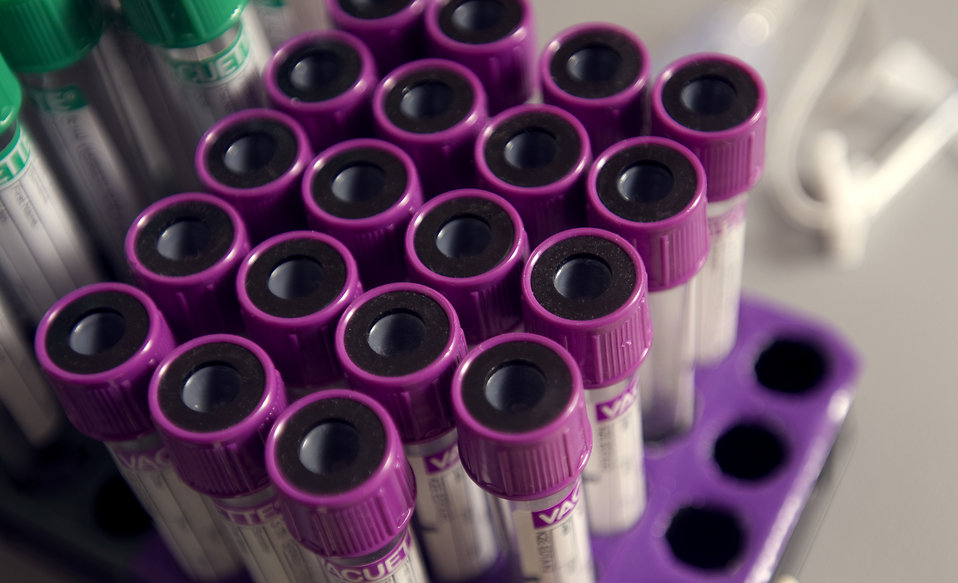The purpose of this trial is to determine if thymectomy combined with prednisone therapy is more beneficial in treating non-thymomatous myasthenia gravis than prednisone therapy alone.
Official Title
A Multi-Center, Single-Blind, Randomized Study Comparing Thymectomy to No Thymectomy in Non-Thymomatous Myasthenia Gravis (MG) Patients Receiving Prednisone
Conditions
Myasthenia Gravis
Study Type
Interventional
Study Design
Treatment, Randomized, Single Blind
Further Details
Primary Outcome Measures:
- Comparison of the prednisone treatment alone to thymectomy (ETTX) plus prednisone treatment, based on the clinical response to therapy measured over the 3 year trial period by the Area Under the Quantitative Myasthenia Gravis Weakness Score
- Testing the difference of total prednisone used over the 3 year trial period measured by pill count from blister packs (Area Under the prednisone Dose Time Curve, AUDTC) conditional on the results of comparing AUQMG.
Myasthenia gravis (MG) is an autoimmune disease involving the thymus in which 85 percent of patients have antibodies to muscle acetylcholine receptors (AchR-Ab) that interfere with neuromuscular transmission. MG frequently causes severe disability that can be life-threatening. Thymectomy (a surgical procedure that removes thymus gland tissue from the chest cavity) has been an established therapy for non-thymomatous MG, or MG without thymoma, for more than 60 years (based on retrospective, non-randomized studies). Corticosteroids are now being used increasingly either as the sole treatment or in combination with thymectomy. Both therapies have associated adverse effects and indications for their use based on randomized trial data are lacking. The purpose of this 5-year trial is to determine if the surgical procedure, extended transsternal thymectomy (ETTX), combined with prednisone therapy is more beneficial in treating individuals with non-thymomatous MG than prednisone therapy alone. More specifically, this study will determine 1) if ETTX combined with prednisone results in a greater improvement in myasthenic weakness, compared to prednisone alone; 2) if ETTX combined with prednisone results in a lower total dose of prednisone, thus decreasing the likelihood of concurrent and long-term toxic effects, compared to prednisone alone; and 3) if ETTX combined with prednisone enhances quality of life by reducing adverse events and symptoms associated with the therapies, compared to prednisone alone. Learning that thymectomy results in a meaningful reduction of prednisone dosage or even full withdrawal or reduces side effects related to prednisone would support using the two treatments – thymectomy and prednisone – together. However, if no meaningful reduction of prednisone dosage or side effects is shown, the results would mean that using the two treatments together offers no advantages over prednisone treatment alone. After an initial screening, study participants will be randomized either to undergo the surgical procedure ETTX and receive prednisone treatment, or to receive prednisone treatment alone without surgery. Participants will be followed for at least 3 years.
Study Start
June 2006
Eligibility & Criteria
- Ages Eligible for Study: 18 Years – 60 Years
- Genders Eligible for Study: Both
Inclusion Criteria:
- Male and female MG patients age 18 to 60 years inclusive
- Onset of generalized MG within the last 3 years
- Positive serum anti-acetylcholine receptor binding antibodies (AchR Ab =/> 1.0 nmol/L)
- MGFA class II-IV at entry, using the MG Foundation of America (MGFA) classification, while receiving optimal anti-cholinesterase treatment with or without oral prednisone
Exclusion Criteria:
- Ocular MG without generalized weakness (MGFA Class I) or minimal weakness that would not require the use of corticosteroids
- Myasthenic weakness requiring intubation (MGFA Class IV) in the prior month
- Immunosuppressive therapy other than corticosteroids in the preceding year
- Medically unfit for thymectomy
- Chest CT evidence of thymoma.
- Pregnancy or lactation; contraindications to the use of corticosteroids, unless postmenopausal or surgically sterile. Women considering becoming pregnant during the period of the study are to be excluded.
- A serious concurrent medical, neurological or psychiatric condition that would interfere with thymectomy or subsequent clinical assessments
- Current alternate day dose of prednisone > than 1.5 mg/kg or 100 mg or the equivalent daily doses (> 0.75 mg/kg or 50 mg).
- Participation in another experimental clinical trial
- History of alcohol or drug abuse within the 2 years prior to randomization.
Total Enrolment
200
Contact Details
The Royal Melbourne Hospital, Dept of Neurology, Royal Melbourne Hospital, Victoria, 3050, Australia; Recruiting
- John King: 61 393 482 500
Royal Prince Alfred Hospital and The University of Sydney, Sydney, NSW 2006, Australia; Recruiting
- John Pollard: 61 2 9351 3385
All content and media on the HealthEngine Blog is created and published online for informational purposes only. It is not intended to be a substitute for professional medical advice and should not be relied on as health or personal advice. Always seek the guidance of your doctor or other qualified health professional with any questions you may have regarding your health or a medical condition. Never disregard the advice of a medical professional, or delay in seeking it because of something you have read on this Website. If you think you may have a medical emergency, call your doctor, go to the nearest hospital emergency department, or call the emergency services immediately.







